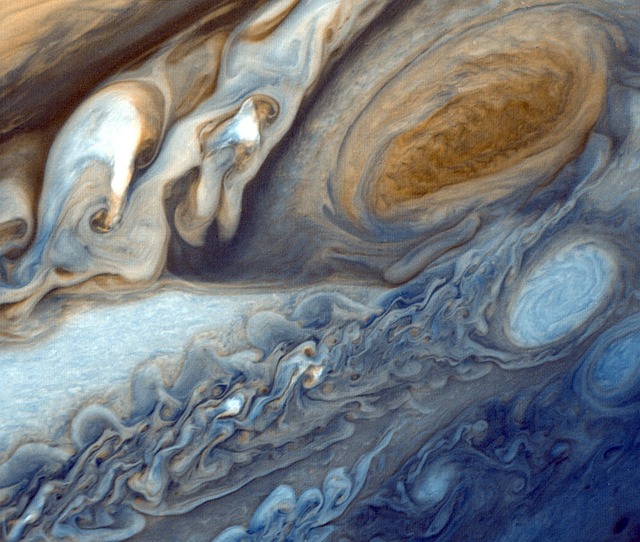Why Is the Mona Lisa So Famous?
a Timeless Portrait
The Mona Lisa, painted by Italian artist Leonardo da Vinci between 1503 and 1519, is arguably the world’s most famous painting.
Despite its seemingly ordinary subject—a modestly dressed woman with a subdued expression—the painting draws thousands of visitors daily to the Louvre Museum, which hangs behind bulletproof glass.
The reasons for its fame are multifaceted and intriguing. While the Mona Lisa’s exceptional quality and realistic portrayal contribute to its celebrity, external events, such as its display in the Louvre and the theft of the painting, have also played a role.
Ultimately, the Mona Lisa’s enigmatic smile and gaze continue to captivate viewers, making it an enduring masterpiece.
outline
The Mona Lisa’s seemingly ordinary subject matter belies its profound impact and enduring fascination.
At first glance, the portrait depicts an unassuming woman dressed modestly and without ostentatious adornments. However, precisely, this simplicity lends the painting its timeless appeal.
Leonardo da Vinci’s genius lies in his ability to elevate the mundane to the extraordinary. While the subject may appear ordinary, Leonardo infuses her with mystery and intrigue.
The woman’s enigmatic smile and subtle gaze invite viewers to ponder her thoughts and emotions, sparking endless interpretations and speculation.
Moreover, Leonardo’s meticulous attention to detail and mastery of technique elevate the portrait beyond mere representation.
The soft transitions of light and shadow, known as sfumato, lend the figure a lifelike quality. At the same time, the delicate rendering of fabric and hair showcases Leonardo’s unparalleled skill as a draftsman.
In essence, the seemingly ordinary subject matter of the Mona Lisa serves as a canvas for Leonardo’s artistic brilliance and his exploration of human complexity.
Through subtle nuances and careful execution, he transforms a simple portrait into an enigmatic masterpiece that continues to captivate audiences centuries later.
Why is Mona Lisa so famous?
What’s so special about the Mona Lisa? The Mona Lisa’s fame transcends time, making it an enduring symbol of art history. Painted by Leonardo da Vinci in the early 16th century, the portrait of an enigmatic woman has captivated viewers for over 500 years.
Its significance lies in Leonardo’s mastery of technique and the aura of mystery surrounding the sitter’s identity and expression.
The painting’s renown skyrocketed in the 19th century, propelled by romantic interpretations and Leonardo’s elevated status as a polymath.
Today, it stands as the epitome of artistic excellence. It inspires fascination and admiration worldwide, firmly establishing its place as one of the most iconic works in art history.
Intriguing questions that continue to captivate scholars
The Mona Lisa’s popularity has sparked intriguing questions that continue to captivate scholars and art enthusiasts alike.
Central to these inquiries is the enigmatic nature of the painting, with its mysterious subject and ambiguous expression. Who was the woman depicted in Leonardo da Vinci’s masterpiece, and what was her relationship with the artist?
The uncertainty surrounding the sitter’s identity has fueled endless speculation, adding intrigue to the painting’s allure.
Furthermore, the reasons behind the Mona Lisa’s unprecedented fame remain elusive. Was it simply the result of Leonardo’s unparalleled skill and technique, or were external factors, such as the painting’s residence in the Louvre and the romanticised narratives that emerged in the 19th century, responsible for its iconic status?
These questions invite exploration and debate, underscoring the enduring fascination with one of history’s most renowned works of art.
Giorgio Vasari
Art historian Giorgio Vasari plays a significant role in contextualising the Mona Lisa’s historical significance. Known for his seminal work “The Lives of the Most Excellent Painters, Sculptors, and Architects,” Vasari provides valuable insights into the Renaissance art world and Leonardo da Vinci’s oeuvre.
In his writings, Vasari praises Leonardo’s mastery of technique and highlights the Mona Lisa as a prime example of his genius. Vasari’s admiration for the painting underscores its significance within the artistic canon and contributes to its enduring fame.
Integrating Giorgio Vasari into the article allows for a deeper exploration of the critical reception of the Mona Lisa during the Renaissance period.
Vasari’s writings could be referenced to provide insights into contemporary perceptions of Leonardo’s artistic prowess and the lasting impact of the Mona Lisa on subsequent generations of artists and scholars.
Therefore, incorporating Giorgio Vasari enriches the article by providing historical context and critical perspective on the Mona Lisa’s enduring legacy.
King Francis I of France
King Francis I of France is crucial in the Mona Lisa’s history. He acquired the painting during his reign in the early 16th century.
Francis I was an avid collector and patron of the arts, and his acquisition of the Mona Lisa contributed significantly to the painting’s fame and prominence.
By adding the Mona Lisa to his royal collection, Francis I elevated its status and ensured its enduring legacy as a cultural treasure.
The Mona Lisa’s royal ownership further enhanced its prestige and solidified its place within France’s artistic heritage.
Additionally, Francis I’s admiration for the painting reflects its widespread acclaim during the Renaissance and underscores its significance as Leonardo da Vinci’s masterpiece.
Therefore, including King Francis I in the article highlights the painting’s royal patronage and its role in shaping the cultural landscape of Renaissance France, further enriching our understanding of its historical context and enduring allure.
Who is Mona Lisa?
Francesco del Giocondo, husband of Lisa Gherardini, is a figure often intertwined with the enigma of the Mona Lisa.
Scholars have speculated that Lisa Gherardini, a Florentine woman, was the model for Leonardo da Vinci’s iconic portrait, making silk merchant Francesco del Giocondo a significant figure in the painting’s historical context.
Francesco del Giocondo’s profession as a silk merchant in Renaissance Florence adds complexity to the painting’s narrative. His status and occupation provide insights into the socio-economic milieu of the time and the potential patronage networks that may have influenced Leonardo’s work.
The association with Francesco del Giocondo deepens our understanding of the sitter’s identity and sheds light on the cultural environment in which the painting was created.
Moreover, his wealth and social standing could offer insights into Lisa’s demeanour in the painting, influencing interpretations of her expression and adding further intrigue to the Mona Lisa’s enduring fascination.
While the exact nature of Lisa Gherardini’s relationship with Leonardo da Vinci and the motivations behind her portrayal in the Mona Lisa remain subjects of debate, the inclusion of Francesco del Giocondo in the painting’s narrative underscores the intertwined personal and historical dimensions that contribute to its enduring allure.
Alternative names
The Mona Lisa is known by alternative names, although they are less commonly used than its iconic title. One alternative name for the painting is “La Gioconda,” which derives from the Italian surname of the woman believed to be the portrait’s subject, Lisa Gherardini. It refers to her married name, “Gioconda,” being an alternate spelling.
Additionally, the painting is sometimes called “La Joconde” in French, a variation of the same name. These alternative names are less frequently used but are still recognised as referring to the famous portrait by Leonardo da Vinci.
Agostino Vespucci
The note by Agostino Vespucci’s historical significance further corroborates the link between Lisa Gherardini and the Mona Lisa.
Agostino Vespucci, an acquaintance of Leonardo da Vinci, referred to a portrait of Lisa del Giocondo in the early 16th century, providing tangible evidence supporting the sitter’s identity.
This historical documentation adds credibility to the theories surrounding the painting’s origins and underscores the intertwined personal and historical dimensions contributing to its enduring allure.
The exact nature of Lisa Gherardini’s relationship with Leonardo da Vinci and the motivations behind her portrayal in the Mona Lisa remain subjects of debate.
Including Francesco del Giocondo and the “note by Agostino Vespucci” in the painting’s narrative enriches our understanding of its historical context and enduring fascination.
The Artistic Merit of the Mona Lisa
Sfumato
The Mona Lisa’s artistic merit lies in Leonardo da Vinci’s masterful execution of the sfumato technique, characterised by subtle gradations of light and shadow.
Through sfumato, Leonardo achieved a remarkable level of realism in portraying the Mona Lisa’s features, particularly her face and the Mona Lisa’s features.
The soft transitions between light and shadow lend the figure a lifelike quality, imbuing her with depth and dimensionality.
Leonardo’s meticulous attention to detail is evident in every aspect of the painting, from the delicate rendering of the sitter’s skin to the intricate folds of her clothing.
By employing sfumato, Leonardo created a sense of mystery and intrigue, drawing viewers into the enigmatic world of the Mona Lisa and solidifying the painting’s status as a timeless masterpiece.
Subject's face and form
In addition to Leonardo da Vinci’s skilful handling of sfumato, the Mona Lisa’s artistic merit is further exemplified by his realistic portrayal of the subject’s face and form.
Leonardo’s meticulous attention to detail and profound understanding of human anatomy are evident in every brushstroke of the painting.
The sitter’s softly sculpted face exhibits a remarkable level of naturalism, with subtle nuances in expression that convey a sense of depth and emotion.
Leonardo’s keen observation of light and shadow allows for the subtle modelling of form, creating a three-dimensional effect that brings the figure to life.
Moreover, Leonardo’s mastery of chiaroscuro is revealed in the delicate rendering of features such as the eyes, nose, and lips, further enhancing the sense of realism.
Through his careful study of the human form, Leonardo transcended mere representation to create a portrait that continues to captivate viewers with its unparalleled beauty and realism.
Enigmatic smile and equivocal expression
Another aspect of the Mona Lisa’s artistic merit lies in the enigmatic smile and equivocal expression that engage viewers profoundly.
Leonardo da Vinci masterfully imbued the sitter with a sense of ambiguity, inviting viewers to ponder the thoughts and emotions behind her subtle smile.
The Mona Lisa’s gaze seems to follow the observer, creating a sense of intimacy and connection that transcends time and space.
This elusive quality has captivated audiences for centuries, sparking countless interpretations and theories about the true nature of the sitter’s emotions.
Some perceive her smile as enigmatic and alluring, while others detect a hint of melancholy or mystery. The ambiguity of the Mona Lisa’s expression is a testament to Leonardo’s skill as an artist and his ability to capture the complexity of human psychology.
This mysterious smile continues to intrigue viewers and cement the Mona Lisa’s status as one of history’s most iconic and enduring works of art.
sigmund freud
Sigmund Freud’s interpretation of the Mona Lisa’s enigmatic smile adds a psychological dimension to the painting’s allure.
As the founder of psychoanalysis, Freud was intrigued by the Mona Lisa’s mysterious expression, particularly her elusive smile.
In his essay “Leonardo da Vinci and a Memory of His Childhood,” Sigmund Freud proposed that the smile represented suppressed sexuality or unconscious desires, suggesting that Leonardo may have infused the painting with subtle erotic undertones reflecting his inner conflicts.
While Freud’s theories have been debated, his analysis of the Mona Lisa’s smile underscores the painting’s enduring fascination and interpretive richness, extending its significance beyond art history into psychology.
Freud’s connection to the Mona Lisa highlights the painting’s multifaceted legacy as a subject of artistic, historical, and psychological inquiry, enriching our understanding of its enigmatic appeal.
Cracks in the paint
Like those in many other old paintings, the cracks in the painting of the Mona Lisa are primarily the result of the natural ageing process and the materials used by the artist.
Leonardo da Vinci created the Mona Lisa using oil paint on a wooden panel, a common technique of the Renaissance period.
Over time, the wood panel and the layers of paint have undergone various environmental changes, such as fluctuations in temperature and humidity, which can cause the materials to expand and contract.
These changes, combined with the natural ageing of the paint and underlying support, lead to cracks, known as craquelure, on the surface of the painting.
Additionally, the Mona Lisa has endured centuries of handling, transportation, and display, which can contribute to developing cracks and other forms of deterioration. T
The painting has also undergone numerous restoration efforts throughout its history, with varying degrees of success in mitigating the effects of ageing and damage.
They do not detract from the Mona Lisa’s enduring beauty and significance despite the cracks.
Some argue that the craquelure adds to the painting’s charm and lends it a sense of authenticity and history.
Moreover, the cracks serve as a testament to the passage of time and the enduring legacy of one of the world’s most famous works of art.
cLandscape in the background of the Mona Lisa
The landscape in the background of the Mona Lisa is a subject of much fascination and interpretation. It depicts a hazy, atmospheric vista with winding rivers, distant mountains, and a winding road disappearing into the horizon.
The landscape is meticulously rendered with depth and perspective, showcasing Leonardo da Vinci’s mastery of atmospheric perspective, where distant objects appear hazier and less distinct than those in the foreground.
This technique creates a sense of depth and expansiveness, enhancing the illusion of spatial depth within the painting.
Interpretations of the landscape’s significance vary widely. Some scholars suggest that the landscape is purely decorative, serving as a backdrop to the portrait without conveying specific meaning.
Others propose that it may represent a specific location, such as the Tuscan countryside or the Florence region, where Leonardo da Vinci spent much of his life.
Additionally, there are symbolic interpretations of the landscape, with some suggesting that it reflects themes of harmony between humanity and nature or the passage of time.
The winding road has been interpreted as a symbol of life’s journey or a metaphor for pursuing knowledge and enlightenment.
External Factors Contributing to Fame
The Louvre Museum’s role as the painting’s home & Expensive Insurance
The Louvre Museum, home to the Mona Lisa since the French Revolution, has played a pivotal role in elevating the painting’s fame.
Displayed behind bulletproof glass and under expensive insurance, the Mona Lisa’s residence in the Louvre has transformed into a symbol of cultural heritage and artistic excellence.
As one of the world’s most renowned cultural institutions, the Louvre provides an unparalleled platform for showcasing masterpieces to millions of visitors annually.
The painting’s association with such a prestigious venue elevates its status and ensures widespread exposure to a diverse audience of art lovers worldwide.
The fortuitous circumstance of being displayed in one of the world’s most-visited museums
The Mona Lisa’s journey to prominence is further bolstered by its fortuitous display in one of the world’s most visited museums.
The Louvre’s status as a cultural icon attracts throngs of visitors eager to witness firsthand the treasures housed within its hallowed halls.
The painting’s prominent placement within the museum ensures maximum visibility and ensures that it remains at the forefront of public consciousness as an enduring symbol of artistic excellence.
The Mona Lisa’s inherent appeal and quality
Beyond its prestigious location, the Mona Lisa’s enduring fame can also be attributed to its inherent appeal and exceptional quality.
Leonardo da Vinci’s masterful execution of technique, including his skilful use of sfumato and his realistic portrayal of the subject’s face and form, captivates viewers with its timeless beauty and complexity.
Moreover, the sitter’s enigmatic smile and equivocal expression invite speculation and interpretation, adding intrigue to the painting’s allure.
Combined with its association with the Louvre Museum, these factors contribute to the Mona Lisa’s enduring status as one of history’s most iconic and celebrated works of art.
The National Gallery of Art
The National Gallery of Art’s significance about the Mona Lisa lies in its role as a renowned cultural institution that showcases iconic artworks.
While the original masterpiece resides in the Louvre Museum in Paris, the National Gallery of Art has hosted exhibitions featuring replicas or reproductions of the Mona Lisa.
These exhibitions allow visitors to experience a version of the iconic painting firsthand, highlighting its global significance and enduring appeal.
Additionally, the National Gallery of Art’s esteemed reputation as a leading museum in the United States further enhances the Mona Lisa’s stature in art history.
Thus, the National Gallery of Art’s association with the Mona Lisa underscores the painting’s enduring legacy and ability to captivate audiences worldwide.
UNITED STATES
The United States in 1963 intersects with the story of the Mona Lisa through an unprecedented event: the painting’s tour to America.
The French government agreed to briefly loan the Mona Lisa to the United States to share the iconic masterpiece with a broader audience.
This historic loan marked the first time the Mona Lisa had ever left the Louvre and travelled overseas. The painting embarked on a highly publicised journey across the Atlantic, where it was exhibited in several American cities, including Washington D.C. and New York City.
The tour generated immense excitement and drew crowds eager to glimpse the famous painting. The Mona Lisa’s visit to the United States in 1963 was a testament to its global renown and enduring appeal, further solidifying its status as one of history’s most celebrated works of art.
Therefore, the involvement of the United States in 1963 highlights the Mona Lisa’s transcultural significance and its ability to captivate audiences across borders and continents.
The Metropolitan Museum of Art’s role in the Mona Lisa’s narrative is notable as it underscores the painting’s global resonance and enduring legacy.
While the original masterpiece resides in the Louvre Museum in Paris, replicas and reproductions of the Mona Lisa have been showcased in exhibitions worldwide, including at the Metropolitan Museum of Art in New York City.
These exhibitions allow audiences to experience a version of the iconic masterpiece firsthand, albeit in a different setting. The Metropolitan Museum’s involvement highlights the Mona Lisa’s transcultural significance and ability to captivate viewers across borders and continents.
Moreover, the museum’s reputation as a leading institution in the art world further enhances the Mona Lisa’s stature within the broader context of art history.
Therefore, the Metropolitan Museum’s connection to the Mona Lisa reinforces the painting’s status as an international icon and underscores its enduring appeal to audiences worldwide.
Influences of Leonardo da Vinci's "Mona Lisa" on his contemporaries
Marcel duchamp
Marcel Duchamp’s connection to the Mona Lisa is famously exemplified through his work titled “L.H.O.O.Q.,” created in 1919. In this piece, Duchamp took a reproduction of the Mona Lisa and added a pencilled-on moustache and goatee, as well as the letters “L.H.O.O.Q.” below the image.
This irreverent defacement transformed the revered masterpiece into a playful and provocative work of art known as a readymade one.
Duchamp’s “L.H.O.O.Q.” challenged traditional notions of art and authorship, sparking debates about the nature of artistic creation and the viewer’s role in interpreting artworks.
By incorporating the Mona Lisa into his artistic practice, Duchamp contributed to the painting’s enduring legacy as a symbol of creative innovation and cultural dissent.
Beyoncé and Jay-Z
Beyoncé and Jay-Z’s inclusion of the Mona Lisa in their music video for the song “Apes**t” demonstrates the painting’s enduring influence on contemporary culture.
Filmed in the Louvre Museum, where the iconic artwork is housed, the music video showcases the power couple amidst some of the world’s most renowned artworks, including the Mona Lisa.
Released in 2018, the video underscores the painting’s cultural significance and highlights its ability to resonate with modern audiences and popular culture.
By integrating the Mona Lisa into their artistic expression, Beyoncé and Jay-Z contribute to its ongoing legacy as a symbol of creativity, innovation, and cultural relevance.
Their connection to the Mona Lisa adds a contemporary dimension to its narrative, showcasing its continued impact and influence in entertainment and popular culture.
Theft and Recovery
The audacious theft of the Mona Lisa in 1911
The resignation of the Louvre’s director of paintings in 1911, following the theft of the most famous painting in the world, the Mona Lisa, reflects the shocking security breach and subsequent public outcry surrounding the incident.
The painting, which had been prominently displayed in the Salon Carré du Louvre behind protective glass, was thought to be secure.
However, on August 21, 1911, Vincenzo Peruggia, an Italian glazier who had previously worked at the museum, executed a daring heist.
Peruggia clandestinely entered the Salon Carré after spending the night in a broom closet, where he proceeded to remove the Mona Lisa from its frame and conceal it under his clothing before quietly leaving the museum.
Peruggia’s familiarity with the museum’s layout and security protocols allowed him to execute the theft relatively efficiently, exposing significant lapses in the Louvre’s security measures.
The audacious theft of the Mona Lisa and the subsequent resignation of the Louvre’s director underscored the need for enhanced security measures. It sparked international outrage, cementing the painting’s status as one of history’s most famous and enigmatic works of art.
The subsequent media frenzy and global attention
The theft of the Mona Lisa ignited a sensational media frenzy and captured people’s imaginations worldwide.
Newspapers published sensational headlines, and speculation ran rampant about the whereabouts of the stolen masterpiece.
The unprecedented nature of the theft, coupled with the painting’s iconic status, ensured that the story received extensive coverage in the press.
The incident catapulted the Mona Lisa to even greater fame, cementing its status as one of history’s most valuable and sought-after works of art.
The painting’s eventual recovery and heightened fame
After over two years, the Mona Lisa was miraculously recovered in December 1913 when Peruggia attempted to sell it to an art dealer in Florence.
The dealer, suspicious of the painting’s origins, contacted the authorities, leading to Peruggia’s arrest and the return of the stolen masterpiece to the Louvre.
The painting’s recovery sparked renewed interest and heightened its fame, with visitors flocking to the Louvre to glimpse the iconic artwork.
The audacious theft and subsequent recovery of the Mona Lisa further solidified its status as one of history’s most celebrated and enigmatic works of art, ensuring its enduring legacy for generations.
The Mona Lisa’s Enduring Mystique
The Mona Lisa’s enduring mystique persists through the ages, fueled by several captivating elements. Foremost among these is the ongoing fascination with the sitter’s identity, which continues to elude definitive conclusions, inviting endless speculation and theories from scholars and enthusiasts alike.
The subject’s enigmatic smile and gaze are central to the painting’s allure, beckoning viewers into a realm of mystery and intrigue.
This combination of ambiguity and allure captivates audiences, sparking curiosity and prompting introspection as observers ponder the emotions and thoughts concealed behind the Mona Lisa’s serene countenance.
Moreover, the painting’s celebrity is not solely attributed to its intrinsic qualities but also to a series of chance circumstances, such as its residence in the Louvre Museum and the audacious theft in 1911, which have further heightened its allure and cemented its status as an iconic masterpiece in the annals of art history.
Noah Charney
Noah Charney, an esteemed art historian and author specialising in art crime, contributes valuable insights to the narrative surrounding the Mona Lisa.
Through extensive research and analysis, Charney offers nuanced perspectives on the painting’s enduring fame and the circumstances surrounding its theft and recovery in 1911.
His expertise illuminates the Mona Lisa’s historical context and significance within the broader landscape of art history, enriching readers’ understanding of its multifaceted legacy.
By incorporating Charney’s scholarly contributions, the article gains depth and context, providing readers with a comprehensive exploration of the Mona Lisa’s cultural impact.
Exploring the Mona Lisa’s Legacy
In conclusion, the Mona Lisa’s legacy endures as a testament to the enduring power of art to captivate and inspire.
From its exceptional quality and enigmatic allure to the chance circumstances and external events that have shaped its fame, the Mona Lisa continues to fascinate viewers across the globe.
As we contemplate this iconic masterpiece, we are reminded of the layers of history and wonder in her gaze.
Whether pondering the mysteries of her enigmatic smile or reflecting on the intricate brushstrokes that bring her to life, the Mona Lisa remains a symbol of artistic excellence and cultural significance.
She has transcended time and captivated generations through the ages, leaving an indelible mark on art and culture.
As we continue to explore her legacy, we are reminded of the Mona Lisa’s enduring power to spark curiosity, inspire creativity, and evoke a sense of wonder in all who behold her.





